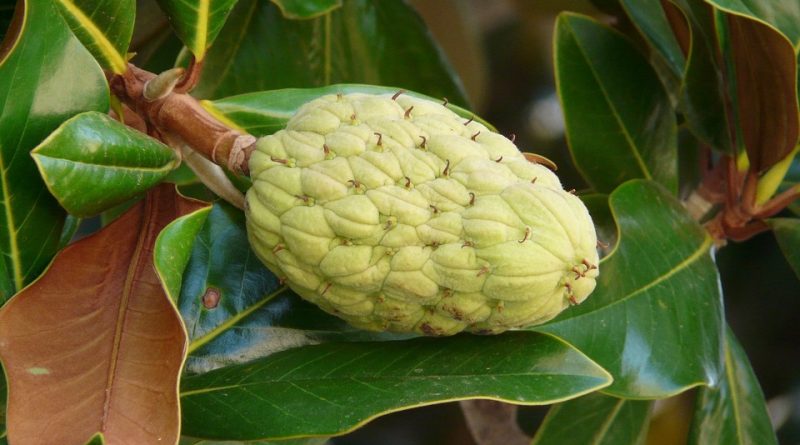Ficus elastica
Ficus elastica
Ficus elastica, also known as Fico del caucciù (Ficus elastica Roxb.) Is an arboreal species belonging to the Moraceae family.
Systematics –
From the systematic point of view it belongs to the Eukaryota Domain, Kingdom Plantae, Magnoliophyta Division, Magnoliopsida Class, Order Urticales, Family Moraceae and therefore to the Genus Ficus and to the Elastic F. Species.
Etymology –
The term of the genus Ficus is the classical Latin name of the fig tree, a genus already known then and probably derived from Hebrew. The specific elastic epithet is a term introduced by the Scottish botanist and surgeon William Roxburgh (1751-1815) in the work Hortus bengalensis (1814) to indicate the properties of natural rubber, extracted from Hevea brasiliensis, a plant also called “rubber tree” and also adopted for this plant.
Geographic Distribution and Habitat –
Ficus elastica is a plant native to tropical wetlands and in particular tropical Asia, India and Malaysia and has been introduced in the West Indies; its original habitat is characterized by strong air humidity; it thrives in the vegetation zones of the tropical rainforest, in the woods and in the bushes and in the light tropical forest. It has been reported in the foothills of the Himalayas and in the lower forests, as well as in the coastal regions of Ecuador and New South Wales, Australia. It is also cultivated in gardens and occasionally in the parks of Nicaragua, in urban areas, for road trees in the Mediterranean and on the roadsides of the Dominican Republic. The species was also found growing in the Kawainui swamp in Hawaii.
Description –
The spontaneous elastic Ficus is a tree that can exceed even the 30 m of height, with large oval leaves of dark shiny green (sometimes mottled with yellow) shiny on the upper page, opaque on the lower one, with the pointed tip, which are attached to the branches by long and rigid petioles; the shoots of the leaves are covered by a pink or reddish protective bract. The trunk is erect and not very branched, with a smooth red-gray bark and often visible adventitious roots on its base.
Cultivation –
The Fico del caucciù is a plant that requires a warm humid climate and a luminous position but not direct sunlight; grown in our environments requires regular watering more abundant in summer spaced out in winter; in fact, it fears dry environments and, if grown in pots, it benefits from frequent spraying on the leaves. Multiplication is generally done by layering at the beginning of summer; also used to renew the plants that summer tend to thin out in the lower area. It easily reproduces also by apical or branch tip cuttings. In Sicily it is grown in the ground where it can reach considerable dimensions and heights. For the cultivation technique, the following sheet can be consulted.
Uses and Traditions –
This plant native to the tropical areas of Asia has a use as an economically important crop plant for rubber; in fact one of its common names, “India rubber tree”, refers to this use. Plantations for this purpose were planted in the mid-nineteenth century, mainly in Southeast Asia, including Malaysia, Myanmar, Sumatra and Java; subsequently, with the increase in the production of high quality rubber from Hevea brasiliensis, the elastic F. fell into commercial disuse.
The date of introduction of this plant in the West Indies is uncertain; certainly in 1903 the species was cultivated in many islands of the West Indies including the Bahamas, St. Thomas, St. Croix, Guadeloupe, Martinique and Barbados. Elastic F. specimens were collected in Puerto Rico in 1913 (Herbarium Smithsonian Collections). The species was certainly present in 1924, as it was included in volume 5 of the flora of Britton and Wilson of Puerto Rico, who described it as “grown for shade and ornament in Puerto Rico and the Virgin Islands”. In Europe, the species was apparently introduced by chance in Italy around 1500, although the date is not yet certain.
The decorative varieties of Ficus elastica varieties are mainly used as houseplants; also other varieties that maintain low heights are used for interiors.
In pot it blooms hardly and reaches the height of 2.5 m with erect and decisive shape. The best known varieties are: Ficus elastica var. decorate and Ficus elastica var. varied.
Preparation Mode –
The Ficus elastica, as well as for uses as a plant for the production of rubber (now practically disused) and ornamental has no other use of food or therapeutic.
Guido Bissanti
Sources
– Acta Plantarum – Flora of the Italian Regions.
– Wikipedia, the free encyclopedia.
– Treben M., 2000. Health from the Pharmacy of the Lord, Advice and experience with medicinal herbs, Ennsthaler Publisher
– Pignatti S., 1982. Flora of Italy, Edagricole, Bologna.
– Conti F., Abbate G., Alessandrini A., Blasi C. (edited by), 2005. An annotated checklist of the Italian vascular flora, Palombi Editore.
Warning: Pharmaceutical applications and alimurgical uses are indicated for informational purposes only and do not in any way represent a medical prescription; there is therefore no liability for their use for curative, aesthetic or food purposes.


